The theme of this month’s art post is sculpture. I’ve written about sculpture before, first with a look at the Prambanan Hindu Temples on the island of Java, Indonesia, and next with a look at the wonderful outdoor sculptures of the Loggia dei Lanzi and Piazza della Signoria in Florence, Italy. I’m taking you back to Florence yet again with a look at the Bargello Museum, one of Florence’s best museums, yet one few visitors know about.
The Bargello was constructed in the mid-13th century and is Florence’s oldest public building. Later, the Palazzo Vecchio was constructed (just around the corner), and the police chief, or bargello, was moved to this building, and it became a jail and place of executions. In the 19th century, it opened as the National Sculpture Museum and since has housed the largest collection of Italian sculpture from the 14th-17th centuries.
The building is constructed around a central courtyard–as you enter the museum, be sure to take a look around and see the coats of arms on the walls.
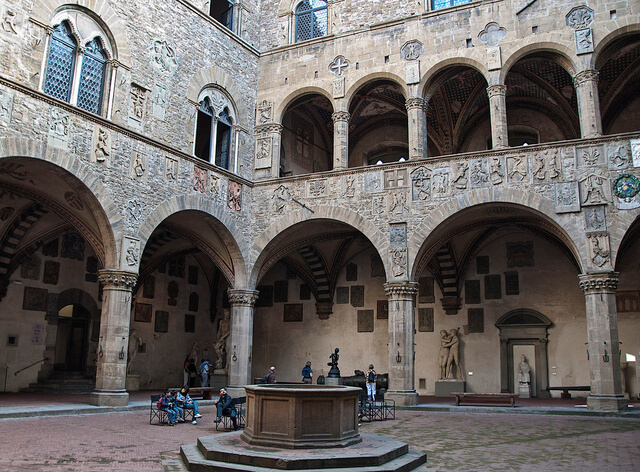
Most of the rooms are housed on the first floor, though a couple of rooms are on the second floor, accessible by a stairway in the ivories room (tip thanks to “Top 5 Sculptures to see in the Bargello” from Tuscany Arts). As you can see, the building itself is worth the visit:
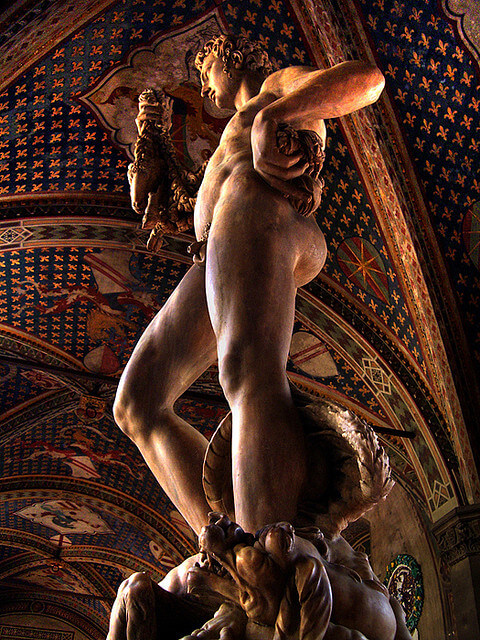
My first experiences of art making a big impact on me were with sculpture, first in the Piazza della Signoria in Florence at age 16 and soon after at the Louvre. The size (often larger than life-size) and three dimensionality give sculpture a powerful presence. One of the finest examples of Renaissance sculpture here is Bacchus, completed in the 1496-97 by Michelangelo, just 21 at the time.
Besides the fact that Michelangelo so wonderfully portrayed the feeling, with Bacchus in obvious drunkenness, there are a couple of things to note about this sculpture. First, the figure is standing in contrapposto, with more weight on one leg than the other (as people tend to really stand). In order to provide the sculpture stability and support, Michelangelo added the tree and satyr behind Bacchus’ leg.
Second, Bacchus is an excellent example of the revival of interest in classical Rome that took place in the Renaissance; although religious subjects dominated the Renaissance, there were some commissions for pagan themes like this one, and certainly artists emulated the style and mastery of Roman arts and architecture. Michelangelo was no exception, and his time in Rome in the 1490s must have influenced him as a young artist.
An earlier and very interesting piece in the Bargello is Donatello’s bronze David, which is so different from the David that everyone knows, Micheangelo’s David in the Accademia in Florence. Donatello’s David was completed much earlier, around 1440. At that time, he was probably the greatest sculptor of his age. David was the first nude free-standing sculpture since ancient Rome, making this a pivotal work. It’s also interesting that, unlike other depictions of David, this David seems young and, some have claimed, effeminate. I personally love it–the hat, beautiful hair, and details of his boots and the head of Goliath.
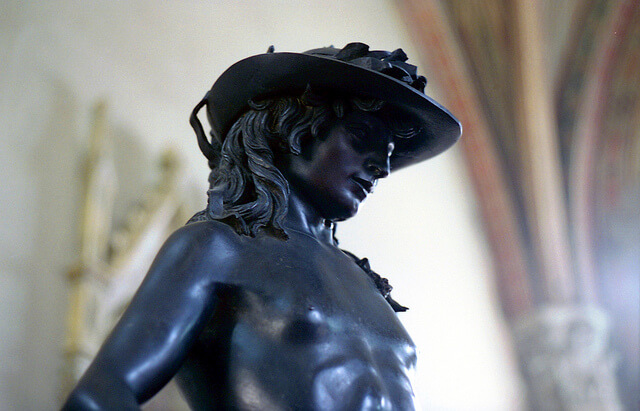
The Bargello also houses many important works of relief sculpture, or sculptures that are not freestanding but instead have a flat surface background. If you’ve been to Florence, you have seen the doors of the Baptistery and may know that the commission for two of the sets of doors was a result of a competition in the year 1401. Lorenzo Ghiberti and Filippo Brunelleschi were the two runner ups, and their original competition panels are here. The story chosen for the competition was the sacrifice of Isaac in which God commands Abraham to kill his son Isaac as a test of faith, but an angel intervenes at the last moment.
What is amazing about these panels (and the Baptistery doors) is how the artists were able to create realistic space in the surface. In the winning panel (above), the angel is expertly foreshortened from the use of perspective by the very young Ghiberti who, by the way, was trained as a painter.
There is much more to the Bargello than just these highlights I have described. There are rooms of ceramics, works of ivory, textiles, silver, and more. Here are a few more photos from the Bargello Museum…
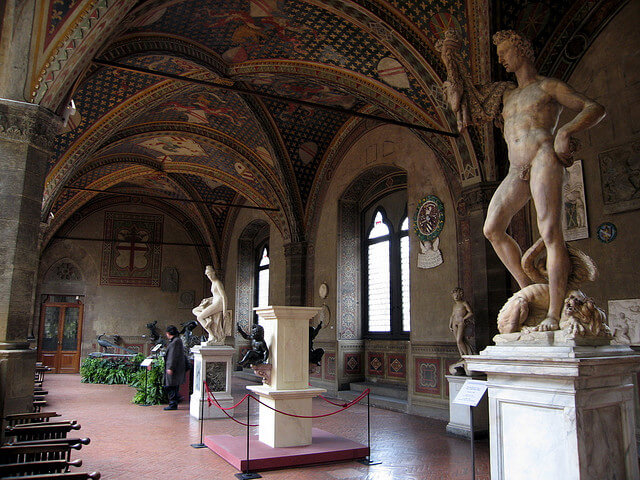
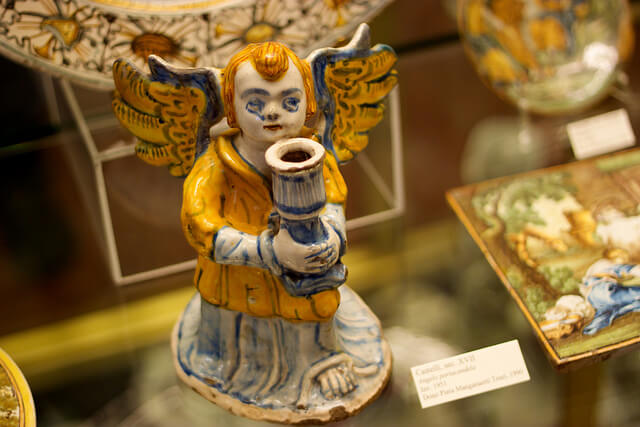
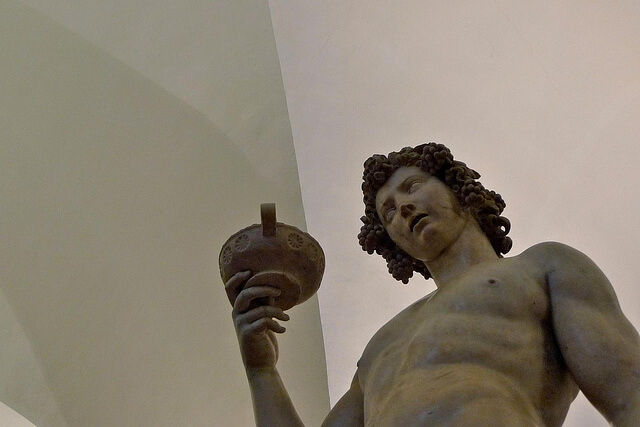
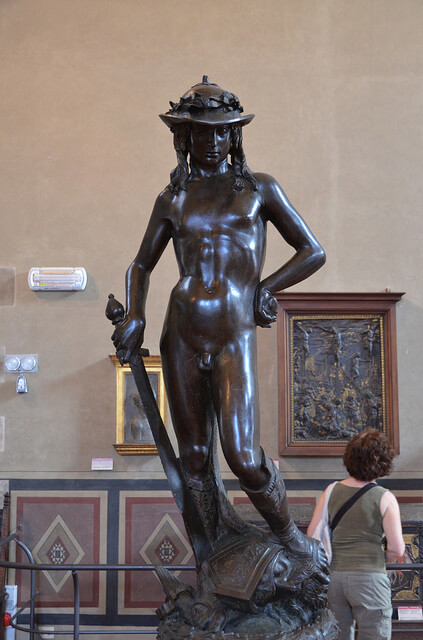
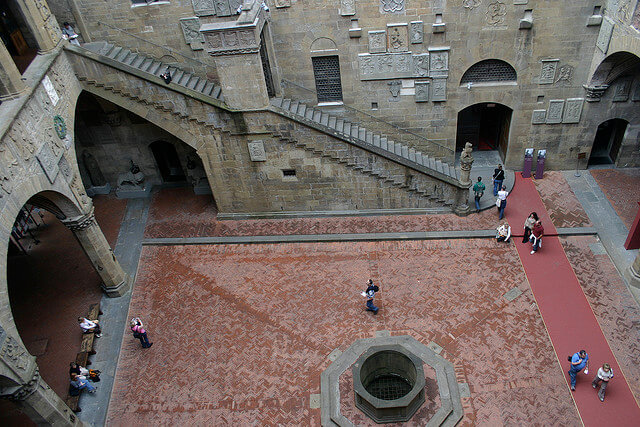
Have you been to the Bargello? If so, please tell me about your experience there.
I’m in love with Italy, especially Florence, so you can learn much more about culture, art, and travel in Italy here.
More on art and life in Italy:
Tips to Understanding Renaissance Paintings

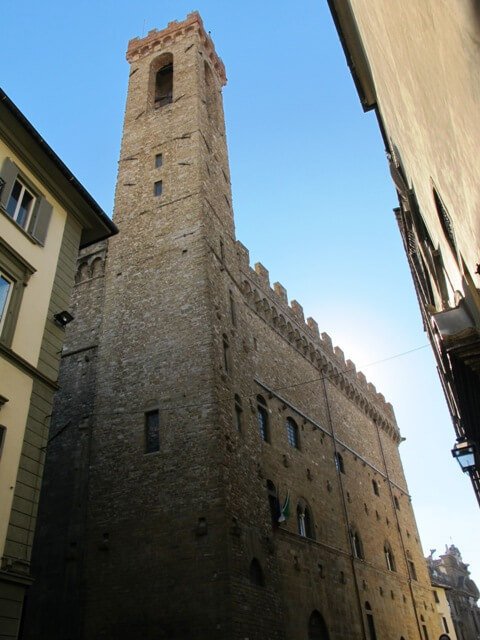
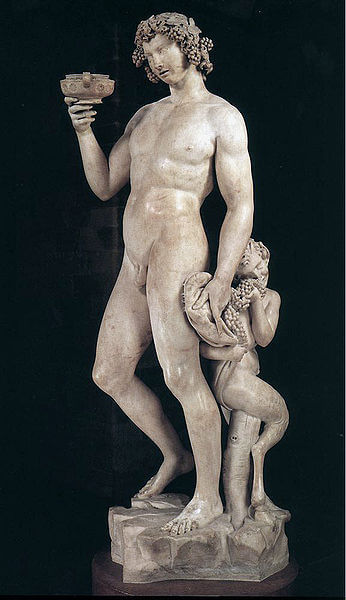
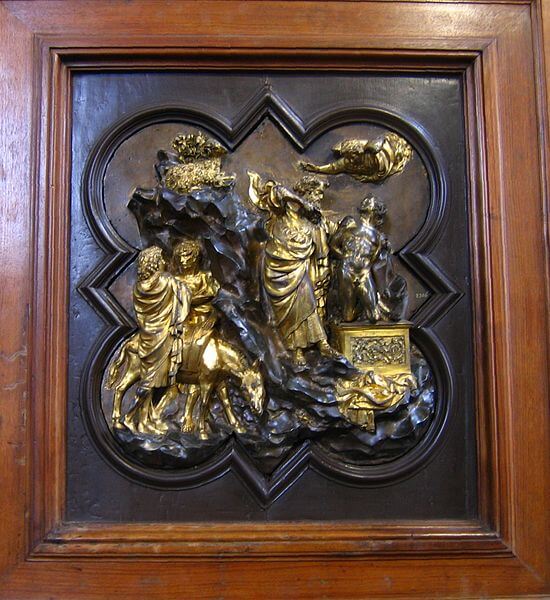

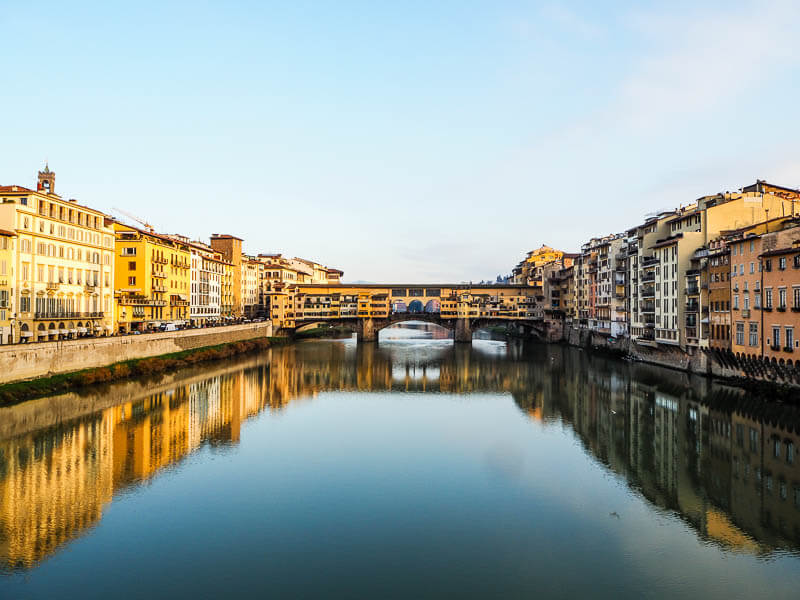
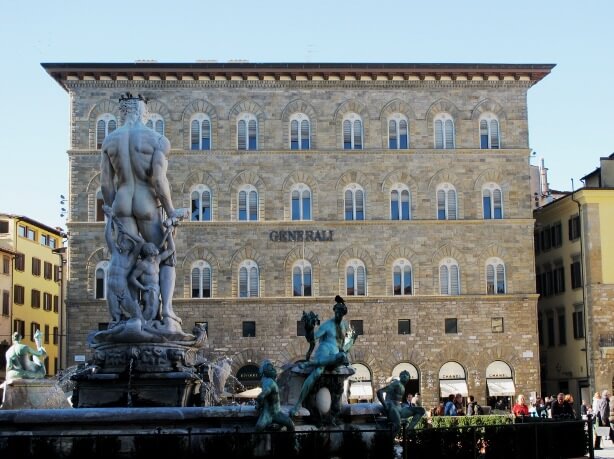
The Bargello building looks as impressive as the sculpture it houses! I wish I had paid more attention to it. Seeing Donatello’s David was a highlight for me. Really enjoyed this post & pics.
I saw this David a long time ago, but I still remember the experience.
I missed this museum and am sad I did. Donatello’s David has always been one of my favourites for its unique way of depicting him – as you said it is a more feminine portrayal of David.
Great post and beautiful pics!
Murissa
Thanks, and yes, I like that David, too.
I’ve never been to Bargello but have been to Italy a number of times.
You are correct in that the building is stunning and so are the sculptures. There is something magical about Italian history and art work. It is such a rich heritage a clearly an envy for the rest of the world.
“something magical about Italian history and art…” yes, I completely agree 🙂
THOSE CEILINGS! I need to go just to see the ceilings.
The polychrome coats of arms are a fantastic visual segue from the medieval exterior to the Renaissance pieces inside.
Sidenote: that candlestick is TERRIFYING. Far too clown-like…
I know, I want to go back to see those ceilings. One thing that impressed me when I was in Florence last was the amazing ceilings even in what appeared to be “ordinary” buildings from the outside.
I remember enjoying the Bargello, especially Michelangelo’s drunk Bacchus and Donatello’s St. George from Orsanmichele.
Yes, those Orsanmichele sculptures are beautiful. I admired them (the others) on the outside of the old church last time I was in Florence.
David is definitely looking like a dudette in that sculpture 🙂
i think i went to this museum ages ago when i toured through Florence but it’s be so long i think it’s time to return.
Me, too, but I can never return to Florence enough 🙂
I went to Florence for a month with the intention of learning Italian, but the weather and architecture was far too amazing to sit in a classroom! Art lovers are completely spoiled when visiting this city – so much to see and enjoy!
So true! There is a lot there that I haven’t seen despite 5 visits!
Someday I’ll visit this place and I’ll make sure to roam around the places you have mentioned here.
I remember being there in 2012 with my daughter. And totally enjoyed the visit. We loved the sculptures and the beautiful
Courtyard.
I was last there in 2012. It is such a beautiful piece of Florence.
Going to Portugal (for a wedding) Spain& Italy next July. Any suggestions?
Where in Portugal? We spend a week in Lisbon with day trips to Cascais and Belem. It’s cheaper and not as polished as Italy, and we really enjoyed it. Beautiful city. FOr Italy, I’d recommend visiting some places that are not on the main tourist routes. Rome, Florence, Venice will be packed and hot–the worst time to visit! Try Bologna, Turin, or some of the small towns. Browse my blog for more ideas or let me know if you have specific questions. 🙂